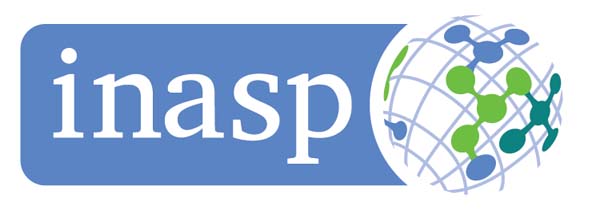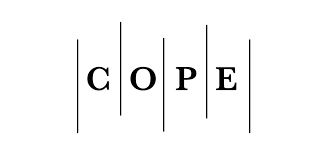Efficient Face Mask Detection Using Hybrid Deep Learning Algorithms
DOI:
https://doi.org/10.29304/jqcsm.2024.16.41770Keywords:
Face Mask, Deep Learning, Convolutional Neural Network, SVMAbstract
The coronavirus COVID-19 pandemic has caused a global health crisis. According to According to the World Health Assembly, one of the best preventative measures is to wear a face mask while out outdoors (WHO). This work presents a hybrid model for face mask identification that combines deep and traditional machine learning. I have trained the proposed system, which consists of convolutional neural networks (ConNN), support vector machines (SVM), and random forests (RF), in three stages, the first stage, used ConNN, the second stage, used the same ConNN with the SVM method, and in the third stage, used ConNN and RF. This paper suggests three different kinds of masked face recognition datasets: the Incorrectly Masked Face Dataset (IMFD), the Correctly Masked Face Dataset (CMFD), and the combination for MaskedFace-Net, a worldwide masked face detection system. Two objectives are presented for the realistic masked face datasets: i) to identify individuals whose faces are covered or not covered, ii) to identify faces whose masks are put on properly or improperly (for example, at airport entrances or among crowds). The suggested model is made up of two parts. The first part is designed for feature extraction using a convolutional neural networks. In contrast, the second section is made to classify face masks using SVM and RF methods. The ConNN achieved 99.92%. and achieved for ConNN and SVM 99.94%. ConNN and RF 98.79%. Moreover,The system has been tested in real world scenarios and can recognize and classify any image selected by Google with high accuracy. we a comparison and the results aim to evaluate the proposed model.
Downloads
References
https://www.who.int/.Accessed April 2021
2Glogowsky, E. Hansen, and S. Schächtele, “How effective are social distancing policies? Evidence on the fight against COVID-19,” PLOS ONE, vol. 16, no. 9, p. e0257363, Sep. 2021, doi: 10.1371/journal.pone.0257363.I. S. Jacobs and C. P. Bean, “Fine particles, thin films and exchange anisotropy,” in Magnetism, vol. III, G. T. Rado and H. Suhl, Eds. New York: Academic, 1963, pp. 271–350.
Gu et al., “Recent Advances in Convolutional Neural Networks,” ArXiv151207108 Cs, Oct. 2017, Accessed: Jan. 18, 2022. [Online]. Available: http://arxiv.org/abs/1512.07108R. Nicole, “Title of paper with only first word capitalized,” J. Name Stand. Abbrev., in press.
Q. Zhang, M. Zhang, T. Chen, Z. Sun, Y. Ma, and B. Yu, “Recent Advances in Convolutional Neural Network Acceleration,” Neurocomputing, 2019, doi: 10.1016/j.neucom.2018.09.038.
A. J. Sathyamoorthy, U. Patel, Y. A. Savle, M. Paul, and D. Manocha, “COVID-Robot: Monitoring Social Distancing Constraints in Crowded Scenarios,” ArXiv200806585 Cs, Aug. 2020, Accessed: Jan. 18, 2022. [Online]. Available: http://arxiv.org/abs/2008.06585
Senqiu Chen, Wenbo Liu, and Gong Zhang. Efficient transfer learning combined skip-connected structure for masked face poses classification. IEEE Access, 12, 2021.
M. Loey, G. Manogaran, M. H. N. Taha, and N. E. M. Khalifa, “A hybrid deep transfer learning model with machine learning methods for face mask detection in the era of the COVID-19 pandemic,” Measurement, vol. 167, p. 108288, Jan. 2021, doi: 10.1016/j.measurement.2020.108288.
Y. LeCun, F.J. Huang, L. Bottou, “Learning methods for generic object recognition with invariance to pose and lighting,” Proc. Computer Vision and Pattern Recognition Conference (CVPR), IEEE Press, 2004.
G Jignesh Chowdary, Narinder Singh Punn, Sanjay Kumar Sonbhadra, and Sonali Agarwal. Face mask detection using transfer learning of inceptionv3. In Intl. Conf. on Big Data Analytics, 2020.
Aniruddha Srinivas Joshi, Shreyas Srinivas Joshi, Goutham Kanahasabai, Rudraksh Kapil, and Savyasachi Gupta. Deep learning framework to detect face masks from video footage. In CICN, pages 435–440. IEEE, 2020
Jun Chen et al. Deep learning-based model for detecting 2019 novel coronavirus pneumonia on high-resolution com- puted tomography. Scientific reports, 2020.
Lin Li et al. Using artificial intelligence to detect covid-19 and community-acquired pneumonia based on pulmonary ct: evaluation of the diagnostic accuracy. Radiology, 296(2), 2020.
Muhammad Farooq and Abdul Hafeez. Covid-resnet: A deep learning framework for screening of covid19 from ra- diographs. arXiv preprint arXiv:2003.14395, 2020.
Ali Narin, Ceren Kaya, and Ziynet Pamuk. Automatic de- tection of coronavirus disease (covid-19) using x-ray im- ages and deep convolutional neural networks. arXiv preprint arXiv:2003.10849, 2020.
R. Golwalkar and N. Mehendale, “Age Detection with Face Mask Using Deep Learning and FaceMaskNet-9,” Social Science Research Network, Rochester, NY, SSRN Scholarly Paper ID 3733784, Nov. 2020. doi: 10.2139/ssrn.3733784.
Preeti Nagrath, Rachna Jain, Agam Madan, Rohan Arora, Piyush Kataria, and Jude Hemanth. Ssdmnv2: A real time dnn-based face mask detection system using single shot multibox detector and mobilenetv2. Sustainable cities and society, 2021.
Nenad Petrovic ́ and Ðord ̄e Kocic ́. Iot-based system for covid-19 indoor safety monitoring. preprint), IcETRAN, 2020.
Zhongyuan Wang et al. Masked face recognition dataset and application. arXiv preprint arXiv:2003.09093, 2020.
ZekunWang,PengweiWang,PeterCLouis,LeeEWheless, and Yuankai Huo. Wearmask: Fast in-browser face mask detection with serverless edge computing for covid-19. arXiv preprint arXiv:2101.00784, 2021.
Adarsh Jagan Sathyamoorthy, Utsav Patel, Yash Ajay Savle, Moumita Paul, and Dinesh Manocha. Covid-robot: Monitor- ing social distancing constraints in crowded scenarios. arXiv preprint arXiv:2008.06585, 2020.
Mahdi Rezaei and Mohsen Azarmi. Deepsocial: Social dis- tancing monitoring and infection risk assessment in covid-19 pandemic. Applied Sciences, 10(21):7514, 2020.
Mark Sandler, Andrew Howard, Menglong Zhu, Andrey Zh- moginov, and Liang-Chieh Chen. Mobilenetv2: Inverted residuals and linear bottlenecks. In CVPR, pages 4510–4520, 2018.
Dongfang Yang, Ekim Yurtsever, Vishnu Renganathan, Keith A Redmill, and Ümit Özgüner. A vision-based social distancing and critical density detection system for covid-19. arXiv preprint arXiv:2007.03578, pages 24–25, 2020.
X. Lin, C. Zhao, and W. Pan, “Towards Accurate Binary Convolutional Neural Network,” ArXiv171111294 Cs Stat, Nov. 2017, Accessed: Jan. 18, 2022. [Online]. Available: http://arxiv.org/abs/1711.11294
C. Cortes and V. Vapnik, “Support vector network,” Machine Learning, vol. 20, no. 3, pp. 273-297, 1995.
Cabani, Adnane, et al. "MaskedFace-Net–A dataset of correctly/incorrectly masked face images in the context of COVID-19." Smart Health 19 (2021): 100144.
Savaş, Burcu Kir, and Yaşar Becerikli. "Real time driver fatigue detection system based on multi-task ConNN." Ieee Access 8 (2020): 12491-12498.
Zhu, Rui, et al. "Masked face detection algorithm in the dense crowd based on federated learning." Wireless Communications and Mobile Computing 2021 (2021): 1-8.
Kong, Yinghui, et al. "Recognition system for masked face based on deep learning." 2nd International Conference on Computer Vision, Image, and Deep Learning. Vol. 11911. SPIE, 2021.
Song, Ziwei, et al. "Spartan face mask detection and facial recognition system." Healthcare. Vol. 10. No. 1. MDPI, 2022.
J. Yu and W. Zhang, “Face mask wearing detection algorithm based on improved YOLO-v4,” Sensors, vol. 21, no. 9, May 2021, doi: 10.3390/s21093263.
M. S. Mazli Shahar and L. Mazalan, “Face identity for face mask recognition system,” in 11th IEEE Symposium on Computer Applications and Industrial Electronics (ISCAIE), Apr. 2021, pp. 42–47, doi: 10.1109/ISCAIE51753.2021.9431791.
M. Z. Asghar et al., “Facial mask detection using depthwise separable convolutional neural network model during COVID-19 pandemic,” Frontiers in Public Health, vol. 10, Mar. 2022, doi: 10.3389/fpubh.2022.855254.
G. Jignesh Chowdary, N. S. Punn, S. K. Sonbhadra, and S. Agarwal, “Face mask detection using transfer learning of InceptionV3,” in Lecture Notes in Computer Science (including subseries Lecture Notes in Artificial Intelligence and Lecture Notes in Bioinformatics), vol. 12581, Springer, Cham, 2020, pp. 81–90.
M. Loey, G. Manogaran, M. H. N. Taha, and N. E. M. Khalifa, “A hybrid deep transfer learning model with machine learning methods for face mask detection in the era of the COVID-19 pandemic,” Measurement, vol. 167, Jan. 2021, doi: 10.1016/j.measurement.2020.108288.
AL-ABBASI, M. Evrişimsel Sinir Ağı, Destek Vektör Makineleri ve Rastgele Orman Kullanarak Yüz Maskesi Algılama 4. Uluslararası Mühendislik Araştırmaları Sempozyumu, Düzce, Türkiye, 04-06 Mart 2022.
Wright, mohammed, et al. Face mask detection using convolutional neural networks. Computer Engineering Department, Kocaeli University, Türkiye, 2022, No:745000.
Our datasets of masked faces are available at https://github.com/MohammedSafaa/-MaskedFace-Net-dataset.
S. Feng, C. Shen, N. Xia, W. Song, M. Fan, B.J. Cowling, Rational use of face masks in the COVID-19 pandemic, Lancet Respirat. Med. 8 (5) (2020) 434–436, https://doi.org/10.1016/S2213-2600(20)30134-X.
X. Liu, S. Zhang, COVID-19: Face masks and human-to-human transmission, Influenza Other Respirat. Viruses, vol. n/a, no. n/a, doi: 10.1111/irv.12740.
“WHO Coronavirus Disease (COVID-19) Dashboard.” https://covid19.who.int/(accessed May 21, 2020).
Fouquet, H. "Paris tests face-mask recognition software on metro riders." Bloomberg. https://www. bloomberg. com/news/articles/2020-05-07/paris-tests-face-mask-recognition-software-on-metro-riders. Accessed 31 (2021).
Loey, Mohamed, Florentin Smarandache, and Nour Eldeen M. Khalifa. "Within the lack of chest COVID-19 X-ray dataset: a novel detection model based on GAN and deep transfer learning." Symmetry 12.4 (2020): 651.
P. Khojasteh, et al., Exudate detection in fundus images using deeply-learnable features, Comput. Biol. Med. 104 (Jan. 2019) 62–69, https://doi.org/10.1016/j.compbiomed.2018.10.031.
L. Wen, X. Li, L. Gao, A transfer convolutional neural network for fault diagnosis based on ResNet-50, Neural Comput. Appl. 32 (10) (2020) 6111–6124, https://doi.org/10.1007/s00521-019-04097-w.
Goutte, Cyril, and Eric Gaussier. "A probabilistic interpretation of precision, recall and F-score, with implication for evaluation." European conference on information retrieval. Berlin, Heidelberg: Springer Berlin Heidelberg, 2005.
Downloads
Published
How to Cite
Issue
Section
License
Copyright (c) 2025 Mohammed AL-Abbasi , Tamarah Kareem, Salam Waley Shneen

This work is licensed under a Creative Commons Attribution-NonCommercial-NoDerivatives 4.0 International License.













